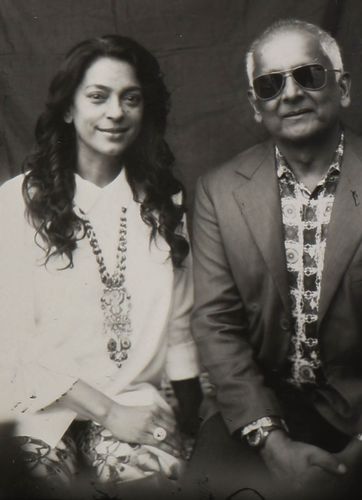Against the frenzy of the old city market, the rose-hued Hawa Mahal rises majestically into the sky. If you pass it by to the old town hall, you might find a man with a 100-watt smile half-hidden by a bottlebrush moustache, sitting in front of it. He is Tikam Chand, and keeping him company is his 163-year-old Carl Zeiss camera. In a way, Chand is as vintage as his camera. Despite his jet-black hair, crisp shirt and polished leather shoes, there is an old-world feel to him, as though he photoshopped himself into today from a distant, sepia-toned past.
“I fell in love with this camera, which first belonged to my grandfather Pahari Lal, the first time I saw it,” says Chand. The Carl Zeiss is the last surviving camera of its kind today, he says. The coming age is going to be digital, but this camera is special, he recalls his father telling him.
Chand, who has been taking pictures with it since 1977, treats it like a family member. “Be it repairs or maintenance, I care for it like my child,” he says fondly of the camera that has been the family’s breadwinner for three generations. “The feel of a picture taken with this camera is surreal.” He, however, refused to reveal from where he got the film for the camera.
Before Chand and his camera became a tourist attraction, people used to come to take their pictures taken, often passport size. Then he became famous, the subject of blogs and news articles. He had cameo appearances in films like Bhool Bhulaiyaa (2007) and Shuddh Desi Romance (2013). He has also photographed celebrities like Paresh Rawal, Anil Kapoor and Akshay Kumar.
However, his business took a real hit with the pandemic. “My work is directly related to tourism, and that time, tourism had completely stopped,” he says.
Chand has shot several types of photographs with different backgrounds and cutouts, creating illusions like the one where the subjects are sitting on a crescent moon. “Some of my favourite photographs include one I clicked of Albert Hall in Jaipur in 1980,” says Chand. “It was unique, because it was so difficult to fit the huge structure in a post-card size frame. Another picture I love is of Hawa Mahal that I clicked from Badi Chaupar (Jaipur’s old town).” Chand is now training his sons to use the camera. He has left it to them whether they want to carry on the legacy or not, but he is adamant that they should be able to answer any questions about the camera.
“Even in the age of digital, you can still see the beauty of old pictures,” he says. “This camera’s process of shooting has seemed like magic to many people, as it has for me. The handmade process of making a vintage photograph reflects the naturalness of a person. Today, black-and-white images that look true are a rarity, and that is why people are attracted to this camera.”
Taking photographs with the Carl Zeiss might seem like a dying art, but it is what enlivens Chand. He himself explains it the best. “I understand it and it understands me. I maintain it, and it maintains me,” he says.



